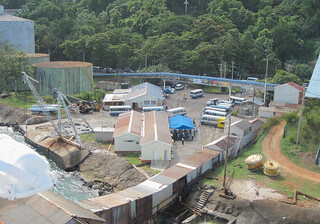Emerson’s Douglas Morris, on the metals & mining and alternative energy industry teams, explores trade offs of trucks and conveyors in mining operations.
This past week Vale SA from Brazil made an interesting announcement when they said they were investing $20 billion to eliminate their truck fleets and install long-haul conveyors. The complete project includes 23 miles of conveyors and the construction of a second railway way through the Amazon. When all is said and done, the company will reduce its operational costs by about half, down to $15 per ton, and will be able to supply some of the cheapest iron ore in the world.
How do miners make these decisions? There are rules of thumb that dictate the breakeven point for these technologies, based on the length of travel and a mine’s annual output, but more rigorous approach is to calculate the net present value of the cost per ton of material per kilometer. There are some other factors too, including the fact that conveyors can take a more direct path and do a better job of negotiating rough terrain. Another is energy usage and the availability of diesel. Trucks are also only about 50% efficient because half the time they’re carrying empty loads and they use a lot of diesel fuel…a truck of several hundred tons will burn over 60 gallons per hour regardless of its load.
Installed cost is high for both, with trucks costing multimillion dollars each and conveyors costing thousands of dollars per meter. Each has required infrastructure with trucks needing flat roads and a dispatch system and conveyors requiring additional crushing units to ensure proper belt loading and distribution. Needless to say, both require their fair share of extensive maintenance, including sending personnel into the pit to perform manual checks of equipment.Ocho Rios – Where the Ship Docked by roger4336, on Flickr, https://jimc.me/Zd2iYP Used under a Attribution-ShareAlike 2.0 Generic https://creativecommons.org/licenses/by-sa/2.0/deed.en
One of the risks with making this decision revolves around redundancy. Whereas there are usually multiple spare haul trucks at any given mine site, there are not typically spare conveyers. What about redundancy? Trucks do a good job with this as you build in redundancy with additional units so if one goes down, there is a spare. Conveyers on the other hand, are not redundant, and represent the potential for a single point of failure that can cause unplanned and expensive downtime.
Miners, including Vale, mitigate this risk by installing online condition based monitoring equipment to continuously check on the health and provide early warning on problems with motors, gears, and head/tail pulleys. This approach not only provides insight into problems before they affect mining operations, it also keeps people out of the pit, which improves mine safety. Using this equipment will help miners meet their cost per ton targets and their goals of zero unplanned downtime and zero harm.





